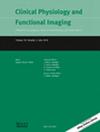Impact of a cuff-based device calibration method on the agreement between invasive and noninvasive aortic and brachial pressure
Abstract
Introduction
Brachial cuff-based methods are increasingly used to estimate aortic systolic blood pressure (aoSBP). However, there are several unresolved issues.
Aims
to determine to what extent the scheme used to calibrate brachial records (1) can affect noninvasive obtained aoSBP levels, and consequently, the level of agreement with the aoSBP recorded invasively, and (2) how different ways of calibrating ultimately impact the relationship between aoSBP and cardiac properties.
Methods
brachial and aortic blood pressure (BP) was simultaneously obtained by invasive (catheterisation) and noninvasive (brachial oscillometric-device) methods (89 subjects). aoSBP was noninvasive obtained using three calibration schemes: ‘SD’: diastolic and systolic brachial BP, ‘C’: diastolic and calculated brachial mean BP (bMBP), ‘Osc’: diastolic and oscillometry-derived bMBP. Agreement between invasive and noninvasive aoSBP, and associations between BP and echocardiographic-derived parameters were analysed.
Conclusions
‘C’ and ‘SD’ schemes generated aoSBP levels lower than those recorded invasively (mean errors: 6.9 and 10.1 mmHg); the opposite was found when considering ‘Osc’(mean error: −11.4 mmHg). As individuals had higher invasive aoSBP, the three calibration schemes increasingly underestimated aoSBP levels; and viceversa. The ‘range’ of invasive aoSBP in which the calibration schemes reach the lowest error level (−5–5 mmHg) is different: ‘C’: 103–131 mmHg; ‘Osc’: 159–201 mmHg; ‘SD’:101-124 mmHg. The calibration methods allowed reaching levels of association between aoSBP and cardiac characteristics, somewhat lower, but very similar to those obtained when considering invasive aoSBP. There is no evidence of a clear superiority of one calibration method over another when considering the association between aoSBP and cardiac characteristics.

 求助内容:
求助内容: 应助结果提醒方式:
应助结果提醒方式:


